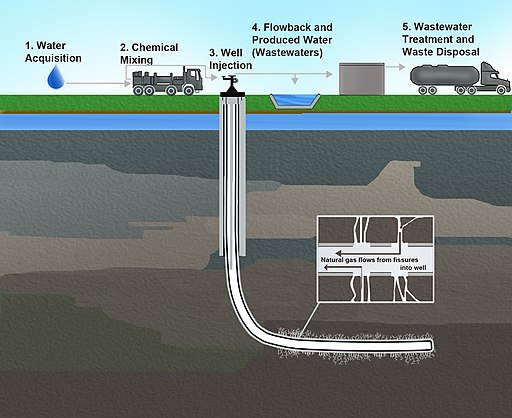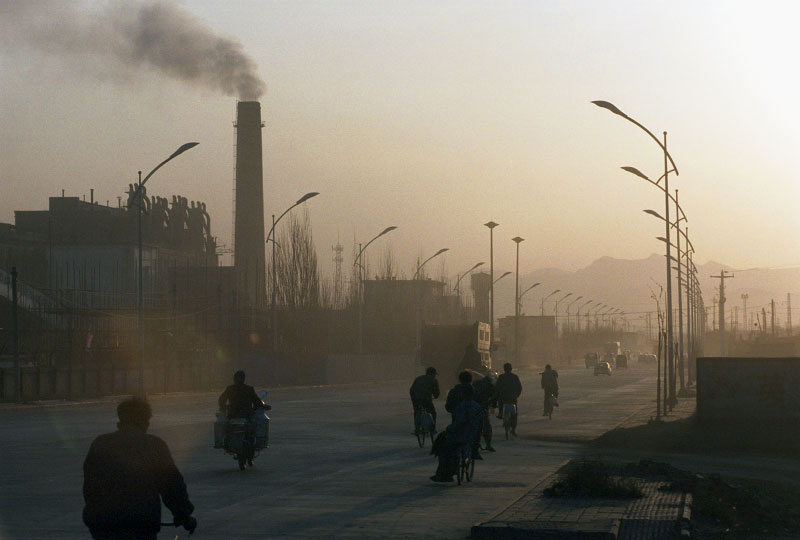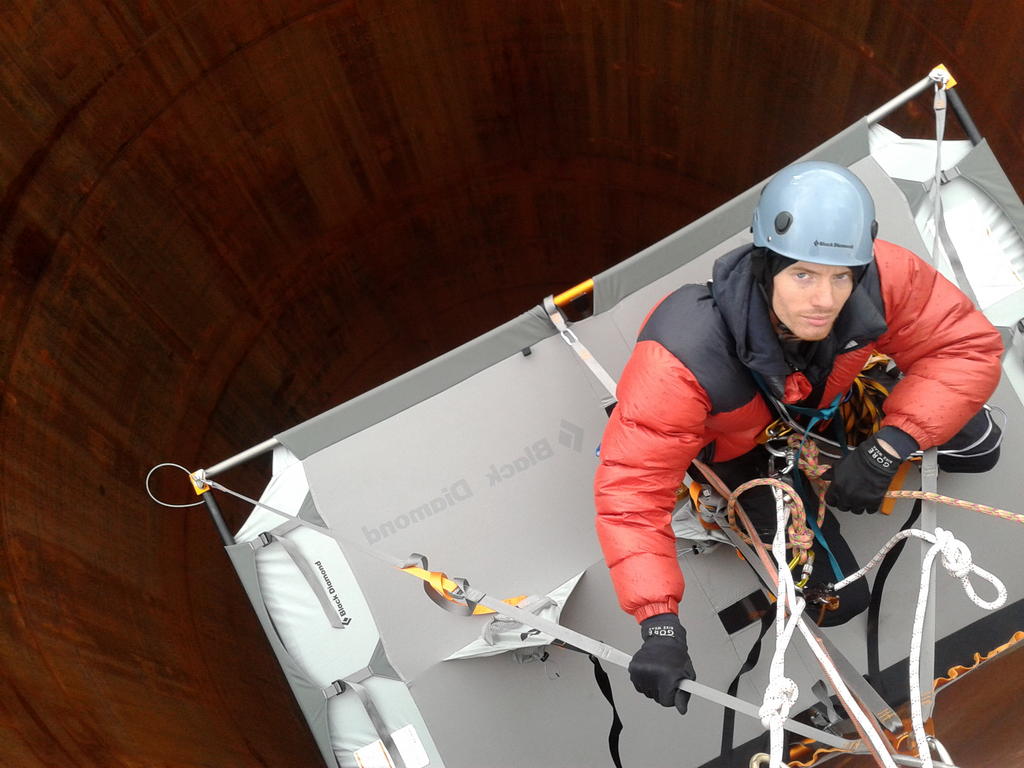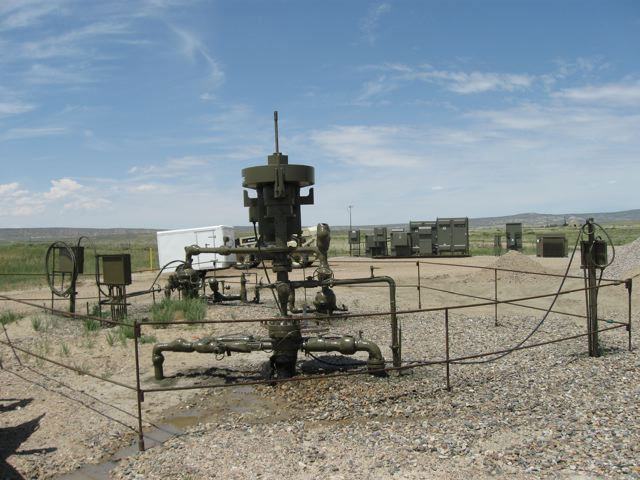
by Deep Green Resistance News Service | Jan 5, 2013 | Climate Change, Mining & Drilling
By Joe Romm / Think Progress
Researchers with the National Oceanic and Atmospheric Administration (NOAA) have reconfirmed earlier findings of high rates of methane leakage from natural gas fields. If these findings are replicated elsewhere, they would utterly vitiate the climate benefit of natural gas, even when used to switch off coal.
Indeed, if the previous findings — of 4% methane leakage over a Colorado gas field — were a bombshell, then the new measurements reported by the journal Nature are thermonuclear:
… the research team reported new Colorado data that support the earlier work, as well as preliminary results from a field study in the Uinta Basin of Utah suggesting even higher rates of methane leakage — an eye-popping 9% of the total production. That figure is nearly double the cumulative loss rates estimated from industry data — which are already higher in Utah than in Colorado.
The Uinta Basin is of particular interest because fracking has increased there over the past decade.
How much methane leaks during the entire lifecycle of unconventional gas has emerged as a key question in the fracking debate. Natural gas is mostly methane (CH4). And methane is a far more potent greenhouse gas than (CO2), which is released when any hydrocarbon, like natural gas, is burned — 25 times more potent over a century and 72 to 100 times more potent over a 20-year period.
Even without a high-leakage rate for shale gas, we know that “Absent a Serious Price for Global Warming Pollution, Natural Gas Is A Bridge To Nowhere.” That was first demonstrated by the International Energy Agency in its big June 2011 report on gas — see IEA’s “Golden Age of Gas Scenario” Leads to More Than 6°F Warming and Out-of-Control Climate Change. That study — which had both coal and oil consumption peaking in 2020 — made abundantly clear that if we want to avoid catastrophic warming, we need to start getting off of all fossil fuels.
A March 2012 study by climatologist Ken Caldeira and tech guru Nathan Myhrvold came to a similar conclusion using different methodology (see “You Can’t Slow Projected Warming With Gas, You Need ‘Rapid and Massive Deployment’ of Zero-Carbon Power“). They found that even if you could switch entirely over to natural gas in four decades, you “won’t see any substantial decrease in global temperatures for up to 250 years. There’s almost no climate value in doing it.” And that was using conventional (i.e. low) leakage rates.
But the leakage rate does matter. A major 2011 study by Tom Wigley of the Center for Atmospheric Research (NCAR) concluded:
The most important result, however, in accord with the above authors, is that, unless leakage rates for new methane can be kept below 2%, substituting gas for coal is not an effective means for reducing the magnitude of future climate change.
Wigley, it should be noted, was looking at the combined warming impact from three factors — from the methane leakage, from the gas plant CO2 emissions, and from the drop in sulfate aerosols caused by switching out coal for gas. In a country like the United States, which strongly regulates sulfate aerosols, that third factor is probably much smaller. Of course, in countries like China and India, it would be a big deal.
An April 2012 study found that a big switch from coal to gas would only reduce “technology warming potentials” by about 25% over the first three decades — far different than the typical statement that you get a 50% drop in CO2 emissions from the switch. And that assumed a total methane leakage of 2.4% (using EPA’s latest estimate). The study found that if the total leakage exceeds 3.2% “gas becomes worse for the climate than coal for at least some period of time.”
Leakage of 4%, let alone 9%, would call into question the value of unconventional gas as any sort of bridge fuel. Colm Sweeney, the head of the aircraft program at NOAA’s Earth System Research Laboratory, who led the study’s aerial component, told Nature:
“We were expecting to see high methane levels, but I don’t think anybody really comprehended the true magnitude of what we would see.”
The industry has tended to keep most of the data secret while downplaying the leakage issue. The Environmental Defense Fund (EDF) is working with the industry to develop credible leakage numbers in a variety of locations.
The earlier NOAA findings were called into question by Michael Levi of the Council on Foreign Relations. The NOAA researchers “have a defence of the Colorado study in press,” Nature notes.
Right now, fracking would seem to be a bridge to nowhere.
From Think Progress: http://thinkprogress.org/climate/2013/01/02/1388021/bridge-to-nowhere-noaa-confirms-high-methane-leakage-rate-up-to-9-from-gas-fields-gutting-climate-benefit/
Banner: US Environmental Protection Agency, Office of Research and Development, Washington, DC, Public domain, via Wikimedia Commons

by Deep Green Resistance News Service | Dec 18, 2012 | Climate Change
By Fiona Harvey / The Guardian
Coal is likely to rival oil as the world’s biggest source of energy in the next five years, with potentially disastrous consequences for the climate, according to the world’s leading authority on energy economics.
One of the biggest factors behind the rise in coal use has been the massive increase in the use of shale gas in the US.
Coal consumption is increasing all over the world – even in countries and regions with carbon-cutting targets – except the US, where shale gas has displaced coal, shows new research from the International Energy Agency (IEA). The decline of the fuel in the US has helped to cut prices for coal globally, which has made it more attractive, even in Europe where coal use was supposed to be discouraged by the emissions trading scheme.
Maria van der Hoeven, executive director of the IEA, said: “Coal’s share of the global energy mix continues to grow each year, and if no changes are made to current policies, coal will catch oil within a decade.”
Coal is abundant and found in most regions of the world, unlike conventional oil and gas, and can be cheaply extracted. As a result, coal was used to meet nearly half of the rise in demand for energy globally in the past decade. According to the IEA, demand from China and India will drive world coal use in the coming five years, with India on course to overtake the US as the world’s second biggest consumer. China is the biggest coal importer, and Indonesia the biggest exporter, having temporarily overtaken Australia.
According to the IEA’s Medium Term Coal Market Report, published on Tuesday morning, the world will burn 1.2bn more tonnes of coal per year by 2017 compared with today – the equivalent of the current coal consumption of Russia and the US combined. Global coal consumption is forecast to reach 4.3bn tonnes of oil equivalent by 2017, while oil consumption is forecast to reach 4.4bn tonnes by the same date.
With the highest carbon emissions of any major fossil fuel, coal is a huge contributor to climate change, particularly when burned in old-fashioned, inefficient power stations. When these are not equipped with special “scrubbing” equipment to remove chemicals, coal can also produce sulphur emissions – the leading cause of acid rain – and other pollutants such as mercury and soot particles.
From The Guardian: http://www.guardian.co.uk/environment/2012/dec/18/coal-challenge-oil-international-energy-agency

by Deep Green Resistance News Service | Nov 21, 2012 | Obstruction & Occupation
By The Canadian Press
Members of a First Nation in northern B.C. have evicted surveyors working on a natural gas pipeline project from their territory and set up a roadblock against all pipeline activity.
A group identifying itself as the Unis’tot’en clan of the Wet’suwet’en Nation said surveyors for Apache Canada’s Pacific Trails Pipeline were trespassing.
“The Unis’tot’en clan has been dead-set against all pipelines slated to cross through their territories, which include PTP [Pacific Trails Pipeline], Enbridge’s Northern Gateway and many others,” Freda Huson, a spokesperson for the group, said in a statement.
“As a result of the unsanctioned PTP work in the Unis’tot’en yintah, the road leading into the territory has been closed to all industry activities until further notice.”
Huson was not available for comment.
It’s unclear what road is blocked, or where. The group said its territory is along the Clore River, located west of the Williams Creek Ecological Reserve about 30 kilometres southeast of Terrace.
Company spokesman Paul Wyke confirmed Wednesday that surveyors were asked to leave the area.
“We had some surveyors in the area last evening and they were asked to leave traditional territory by a small group of members from the Unis’tot’en, and they complied,” Wyke said.
“We understand that there are some members of the Unis’tot’en that have expressed some concerns with the proposed PTP project, and we continue to consult with First Nations along the entire proposed pipeline right-of-way.”
Wyke said the company will continue ongoing consultations with aboriginal groups. The project has the support of 15 of 16 aboriginal groups along the route, he said.
The blockading group said the province does not have the right to approve development on their traditional lands, which lie northwest of Kitimat, the future home of an Apache Canada liquefied natural gas plant and the tanker port for the proposed Northern Gateway pipeline.
From the CBC: http://www.cbc.ca/news/canada/british-columbia/story/2012/11/21/bc-pipeline-surveyors-evicted.html

by Deep Green Resistance News Service | Oct 29, 2012 | Obstruction & Occupation
By Martin Wainwright / The Guardian
Around 20 climate change protesters have seriously disrupted operations at one of the UK’s new generation of gas-fired power stations at West Burton in Nottinghamshire.
Police have made five arrests but overnight eleven protesters from the campaign group No Dash for Gas successfully scaled the middle of the plant’s 91m (300ft) metal chimneys – the plant’s water cooling towers – and another six have occupied a second one which was not yet in use, securing themselves on ledges.
One of the group tweeted exuberantly with accompanying pictures: “Guess where we woke up this morning! Dawn sun shining on other chimney where friends are perched on the ledge.”
Speaking from the group’s makeshift but sophisticated camp slung on the central chimney shortly before 1pm, one of them said: “we are settling in nicely. At the moment some of us are setting up a solar panel and there’s a group fixing our portable loo. We’ve got a portable ledge lowered a short way down the flue with plenty of room for people to sleep on. EDF [the plant’s operator] have assured us that the chimney had been shut down but we’re still a but worried about gases being around. But the plan is to stay up here with some of us in the flue to stop the furnace starting again.”
Ben Healey of No Dash For Gas said that the middle of the plant’s three cooling towers had been working but had now shut down, with steam no longer pouring from its brim. He said: “There are nine activists up there and they have started abseiling down into the flue to prevent the furnaces being relit. That means we are in for the long haul.
“The six people on the other chimney, which is not yet fully built, have barricaded themselves in place and will be very difficult to dislodge.”
The protesters said they had spent a busy night climbing the chimney and hauling up their equipment and food supplies to last at least a week.
The plant’s owners and operators EDF confirmed that the middle tower had been closed down.
No Dash for Gas said that the action was aimed at stopping operations at the £600m power station that is one of a cluster of plants built around the site of the deserted medieval village of West Burton in the valley of the River Trent.
The group said: “West Burton power station is being targeted because it’s one of the first in a new generation of highly polluting gas plants planned for the UK. The coalition government recently announced that it intends to give the green light to as many as 20 new gas plants – a move that would crash Britain’s carbon targets, contribute to the climate crisis and push up bills.”
Nottinghamshire police said that access had been gained to the site by protesters at about 1.20am. A police spokesman said: “Around 10 are thought to have climbed the water towers and have secured themselves to restrict their removal. Searches are ongoing to find a number of other people who are also believed to have gained access to the site.”
Read more from The Guardian: http://www.guardian.co.uk/environment/2012/oct/29/climate-activists-west-burton-gas

by Deep Green Resistance News Service | Sep 20, 2012 | Toxification
By Abrahm Lustgarten / ProPublica
On a cold, overcast afternoon in January 2003, two tanker trucks backed up to an injection well site in a pasture outside Rosharon, Texas. There, under a steel shed, they began to unload thousands of gallons of wastewater for burial deep beneath the earth.
The waste – the byproduct of oil and gas drilling – was described in regulatory documents as a benign mixture of salt and water. But as the liquid rushed from the trucks, it released a billowing vapor of far more volatile materials, including benzene and other flammable hydrocarbons.
The truck engines, left to idle by their drivers, sucked the fumes from the air, revving into a high-pitched whine. Before anyone could react, one of the trucks backfired, releasing a spark that ignited the invisible cloud.
Fifteen-foot-high flames enveloped the steel shed and tankers. Two workers died, and four were rushed to the hospital with burns over much of their bodies. A third worker died six weeks later.
What happened that day at Rosharon was the result of a significant breakdown in the nation’s efforts to regulate the handling of toxic waste, a ProPublica investigation shows.
The site at Rosharon is what is known as a “Class 2” well. Such wells are subject to looser rules and less scrutiny than others designed for hazardous materials. Had the chemicals the workers were disposing of that day come from a factory or a refinery, it would have been illegal to pour them into that well. But regulatory concessions won by the energy industry over the last three decades made it legal to dump similar substances into the Rosharon site – as long as they came from drilling.
Injection wells have proliferated over the last 60 years, in large part because they are the cheapest, most expedient way to manage hundreds of billions of gallons of industrial waste generated in the U.S. each year. Yet the dangers of injection are well known: In accidents dating back to the 1960s, toxic materials have bubbled up to the surface or escaped, contaminating aquifers that store supplies of drinking water.
There are now more than 150,000 Class 2 wells in 33 states, into which oil and gas drillers have injected at least 10 trillion gallons of fluid. The numbers have increased rapidly in recent years, driven by expanding use of hydraulic fracturing to reach previously inaccessible resources.
ProPublica analyzed records summarizing more than 220,000 well inspections conducted between late 2007 and late 2010, including more than 194,000 for Class 2 wells. We also reviewed federal audits of state oversight programs, interviewed dozens of experts and explored court documents, case files, and the evolution of underground disposal law over the past 30 years.
Our examination shows that, amid growing use of Class 2 wells, fundamental safeguards are sometimes being ignored or circumvented. State and federal regulators often do little to confirm what pollutants go into wells for drilling waste. They rely heavily on an honor system in which companies are supposed to report what they are pumping into the earth, whether their wells are structurally sound, and whether they have violated any rules.
More than 1,000 times in the three-year period examined, operators pumped waste into Class 2 wells at pressure levels they knew could fracture rock and lead to leaks. In at least 140 cases, companies injected waste illegally or without a permit.
In several instances, records show, operators did not meet requirements to identify old or abandoned wells near injection sites until waste flooded back up to the surface, or found ways to cheat on tests meant to make sure wells aren’t leaking.
“The program is basically a paper tiger,” said Mario Salazar, a former senior technical advisor to the Environmental Protection Agency who worked with its injection regulation program for 25 years. While wells that handle hazardous waste from other industries have been held to increasingly tough standards, Salazar said, Class 2 wells remain a gaping hole in the system. “There are not enough people to look at how these wells are drilled … to witness whether what they tell you they will do is in fact what they are doing.”
Thanks in part to legislative measures and rulemaking dating back to the late 1970s, material from oil and gas drilling is defined as nonhazardous, no matter what it contains. Oversight of Class 2 wells is often relegated to overstretched, understaffed state oil and gas agencies, which have to balance encouraging energy production with protecting the environment. In some areas, funding for enforcement has dropped even as drilling activity has surged, leading to more wells and more waste overseen by fewer inspectors.
“Class 2 wells constitute a serious problem,” said John Apps, a leading geoscientist and injection expert who works with the U.S. Department of Energy’s Lawrence Berkeley National Laboratory. “The risk to water? I think it’s high, partially because of the enormous number of these wells and the fact that they are not regulated with the same degree of conscientiousness.”
Read more from ProPublica: http://www.propublica.org/article/trillion-gallon-loophole-lax-rules-for-drillers-that-inject-pollutants





